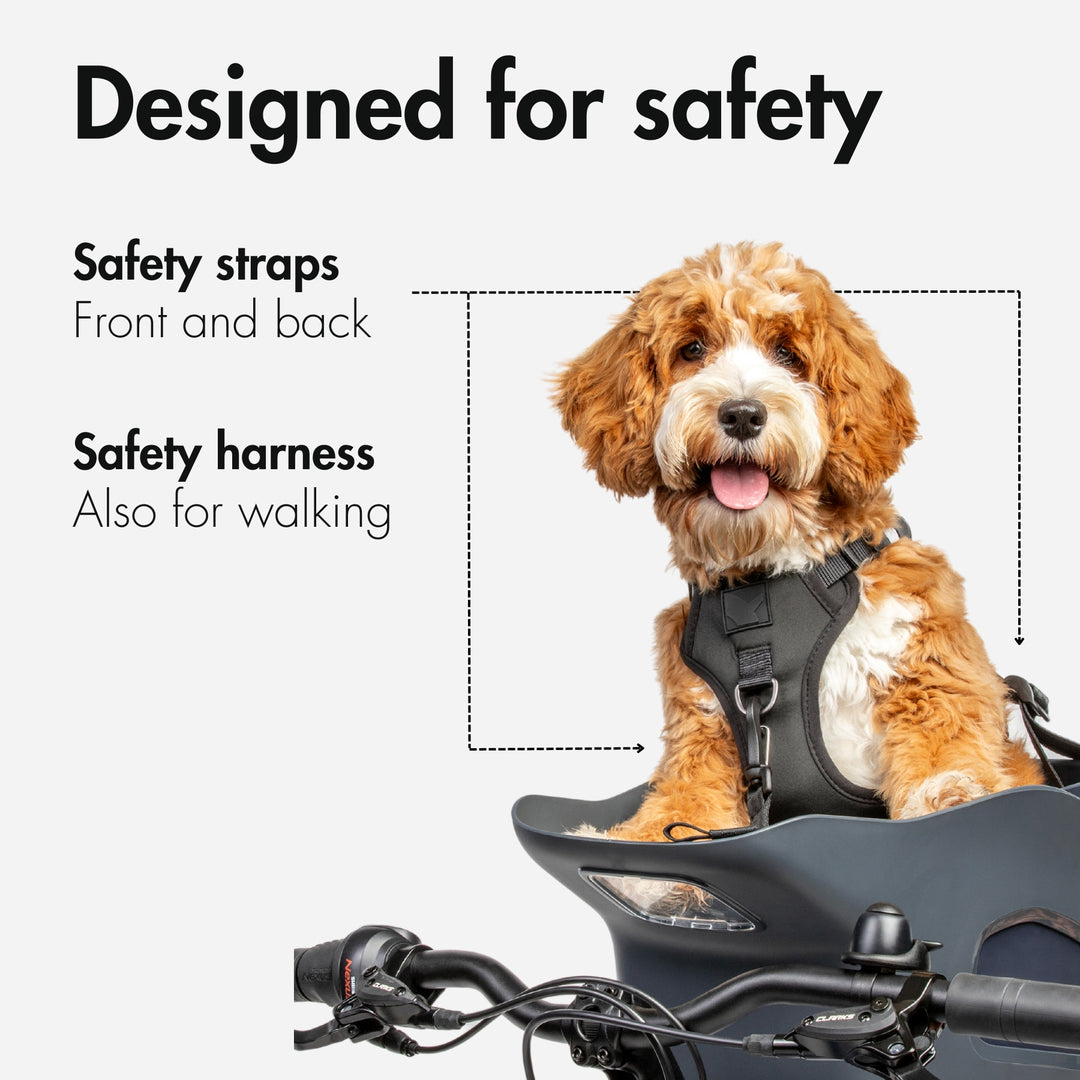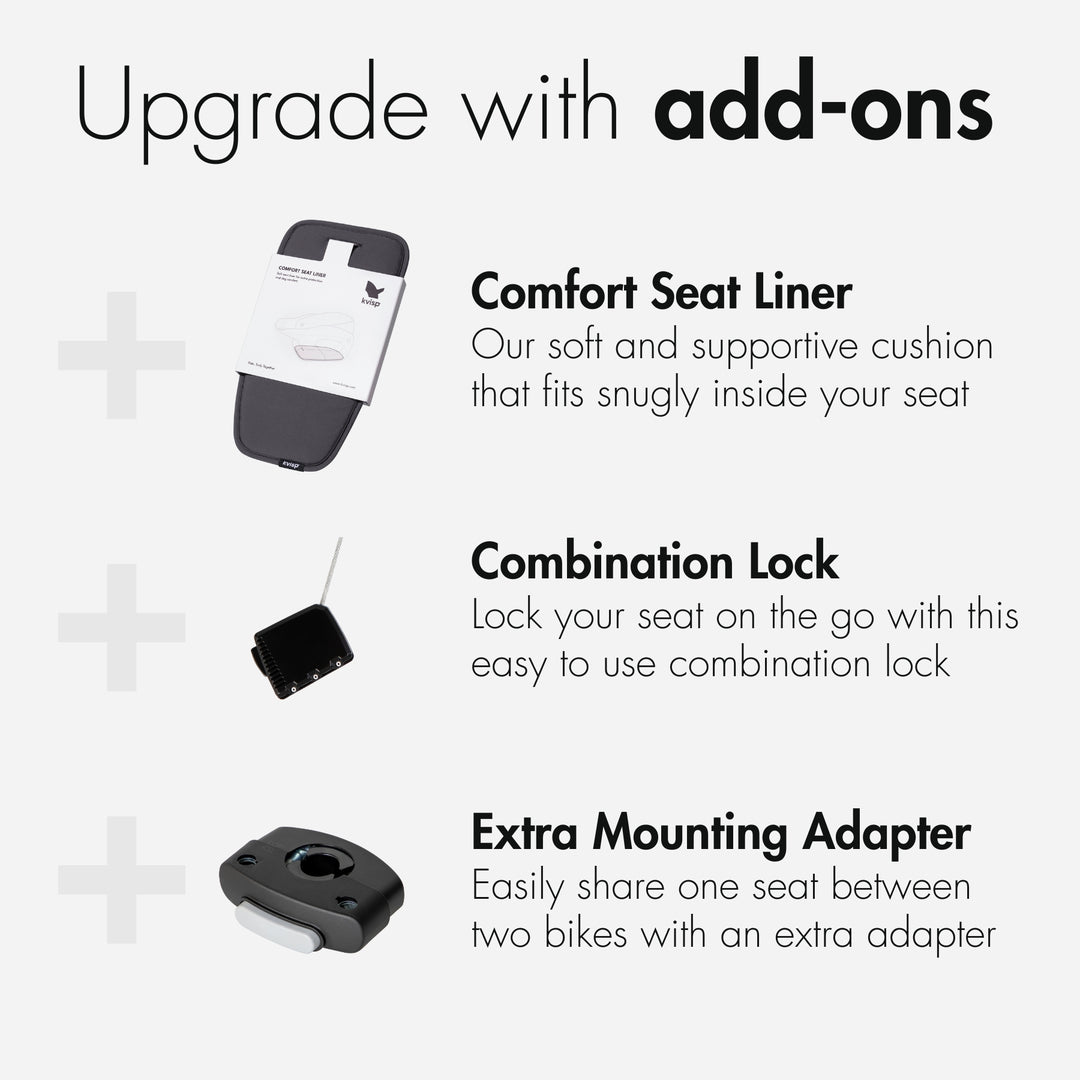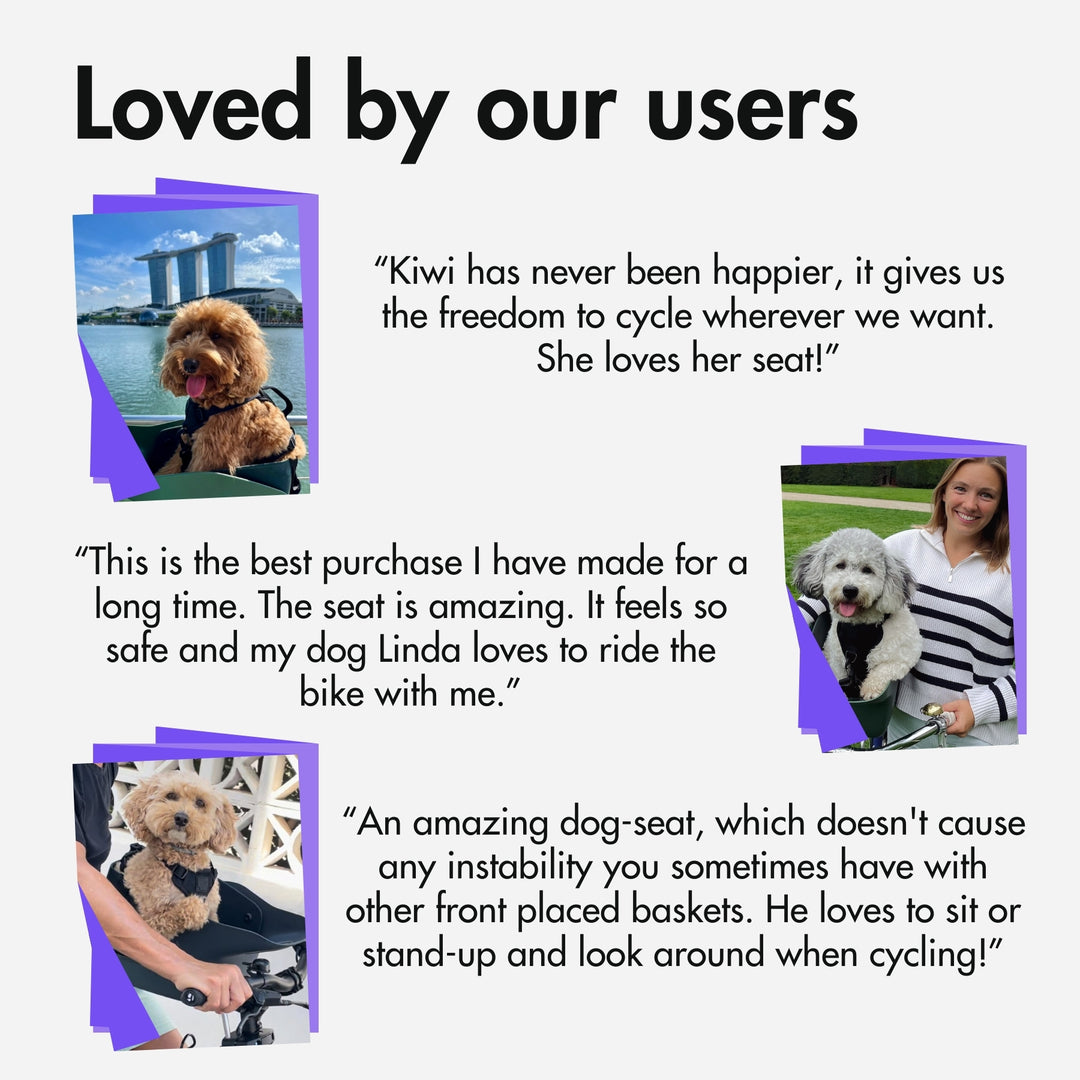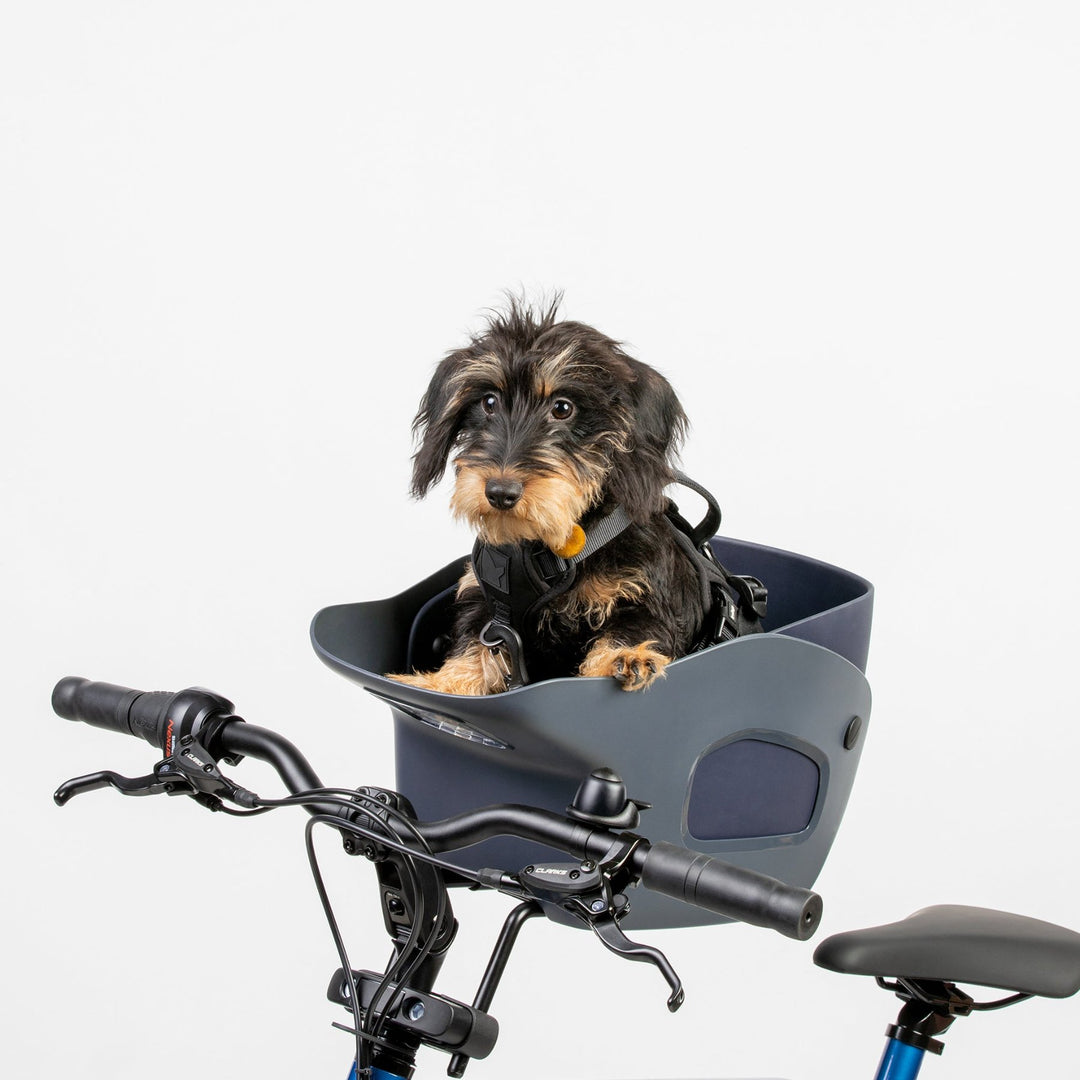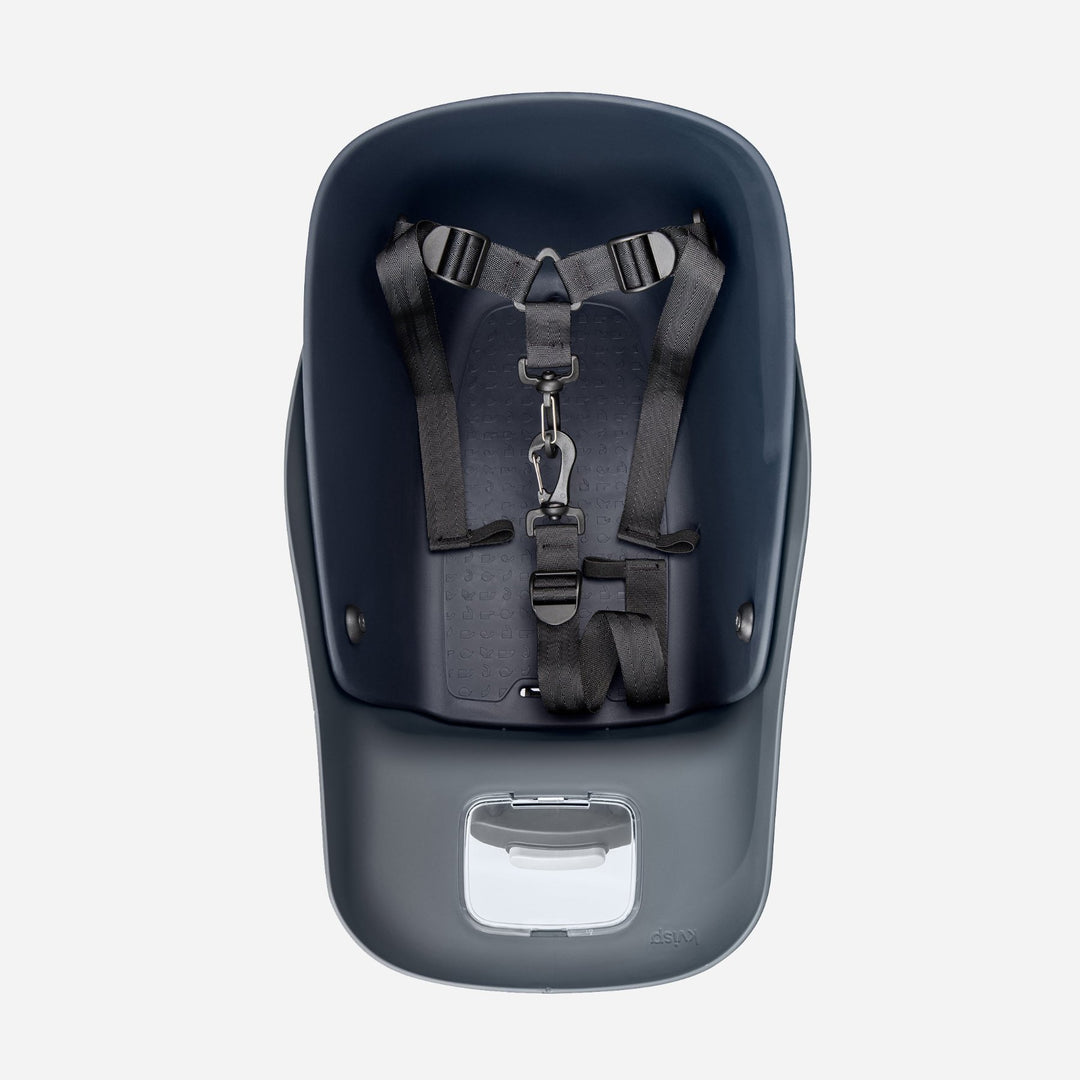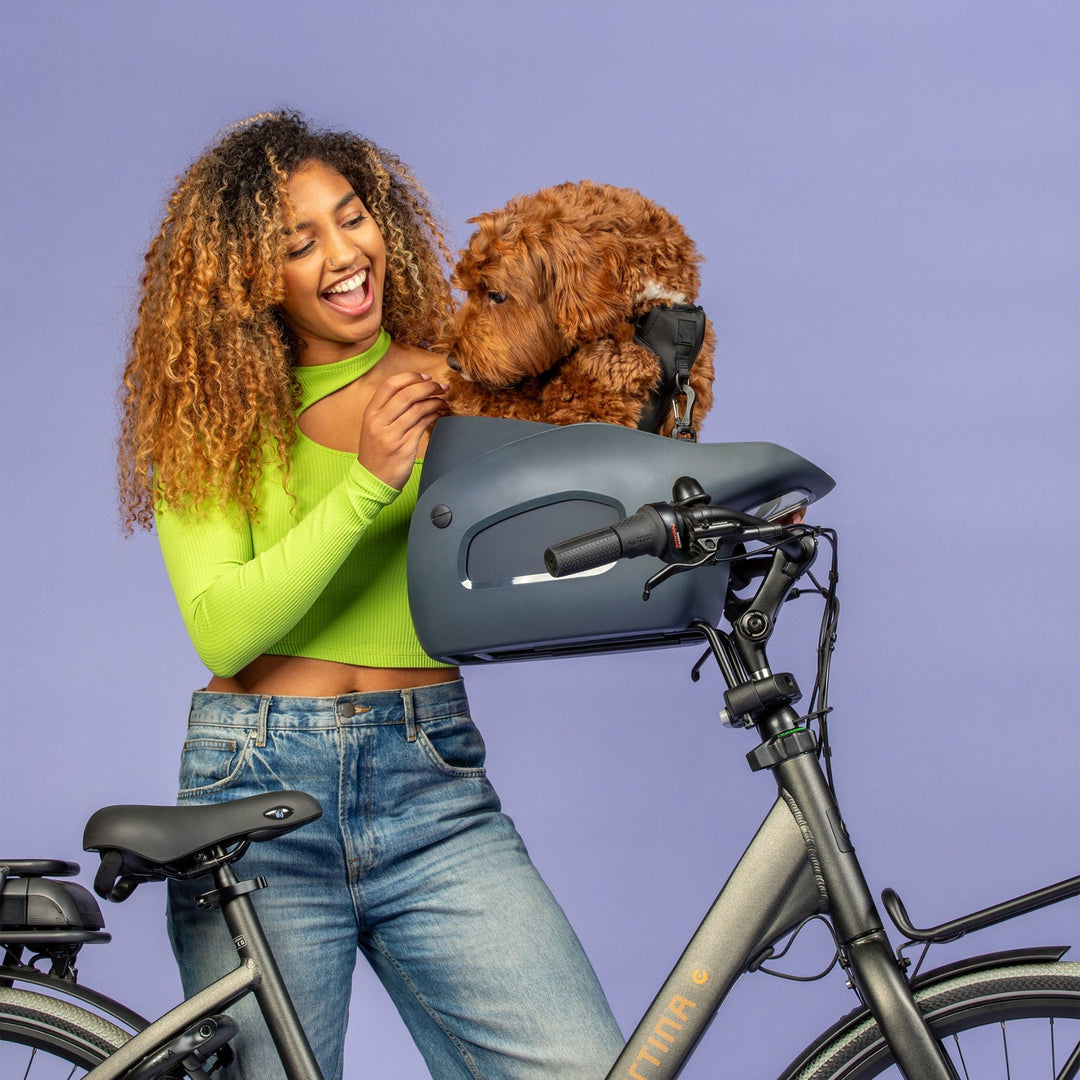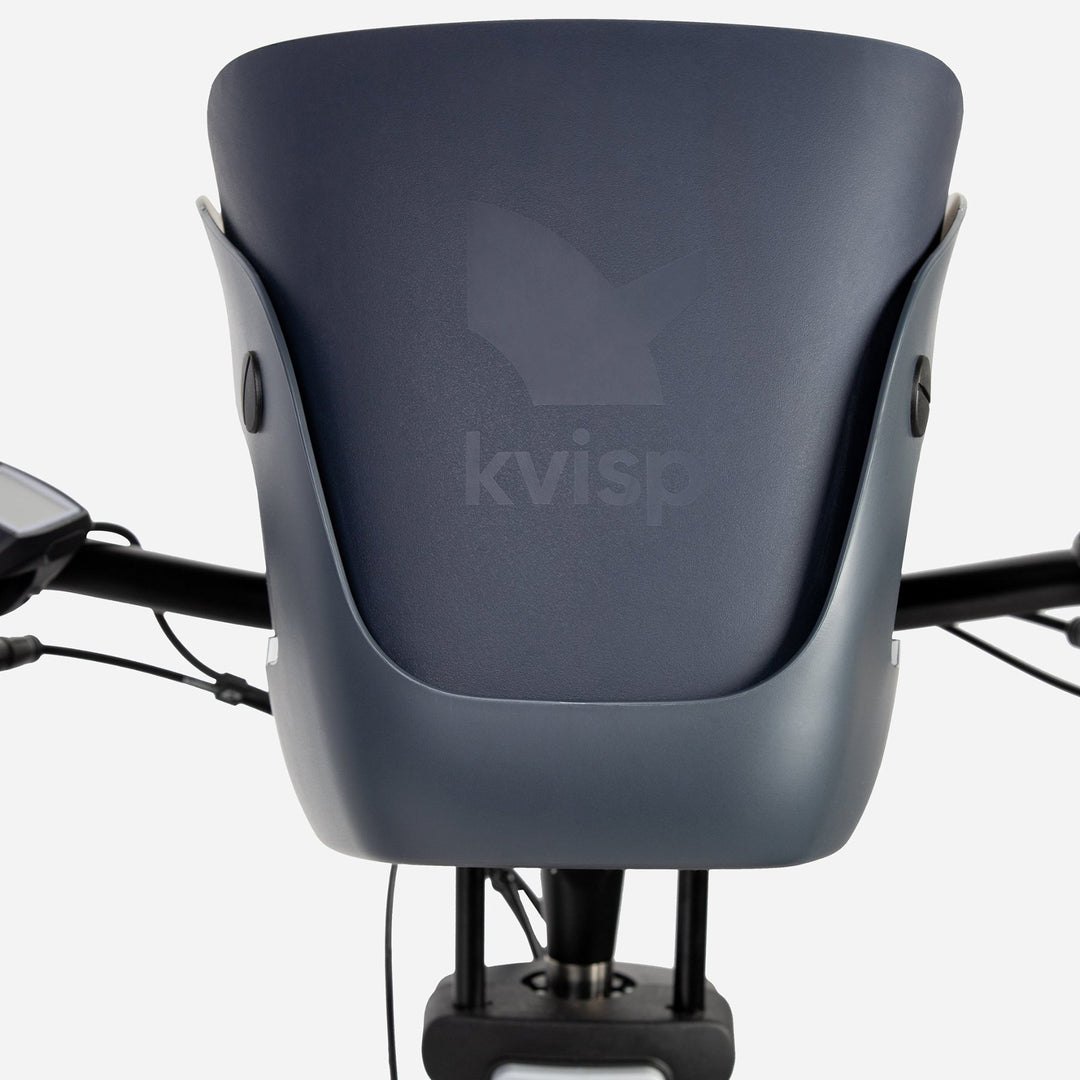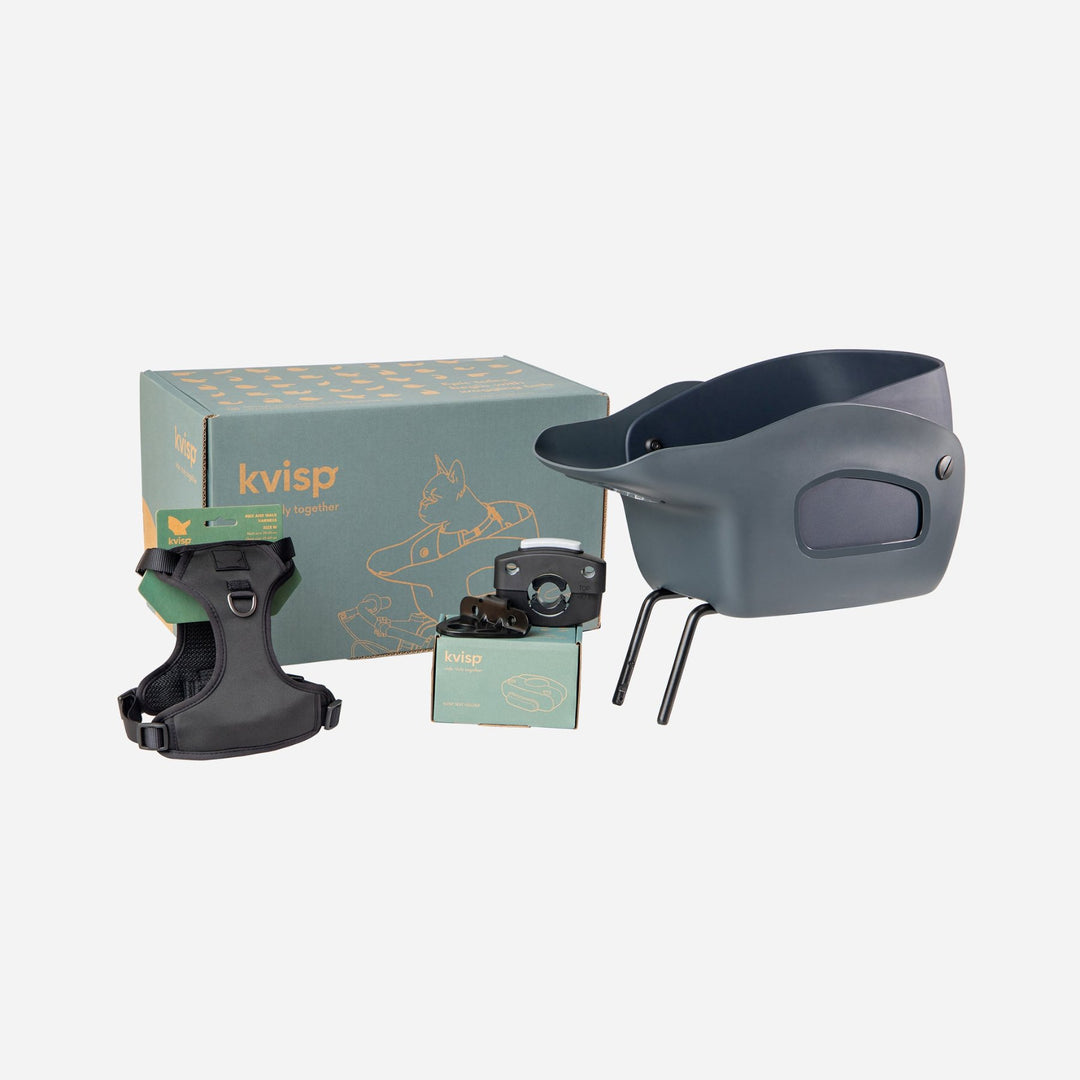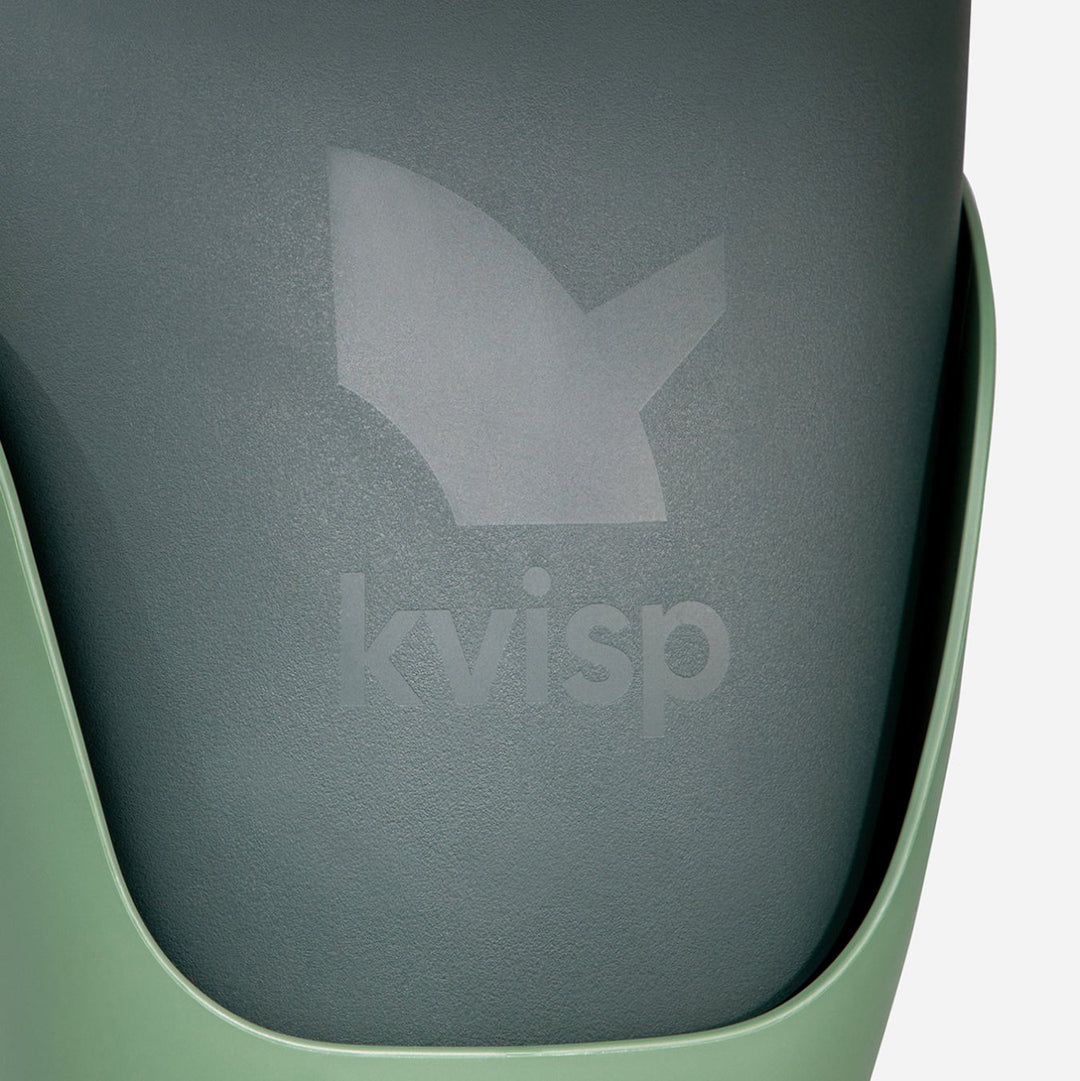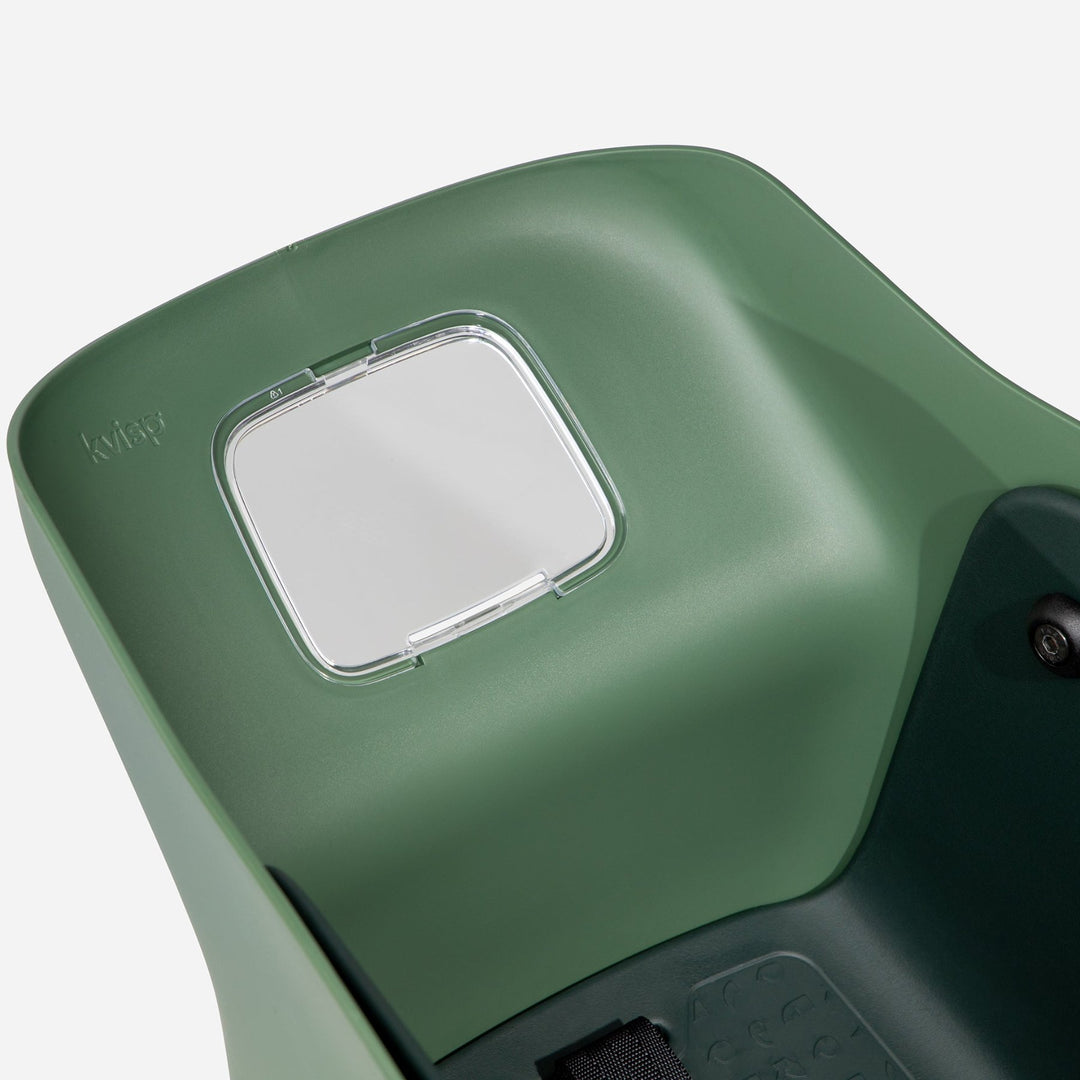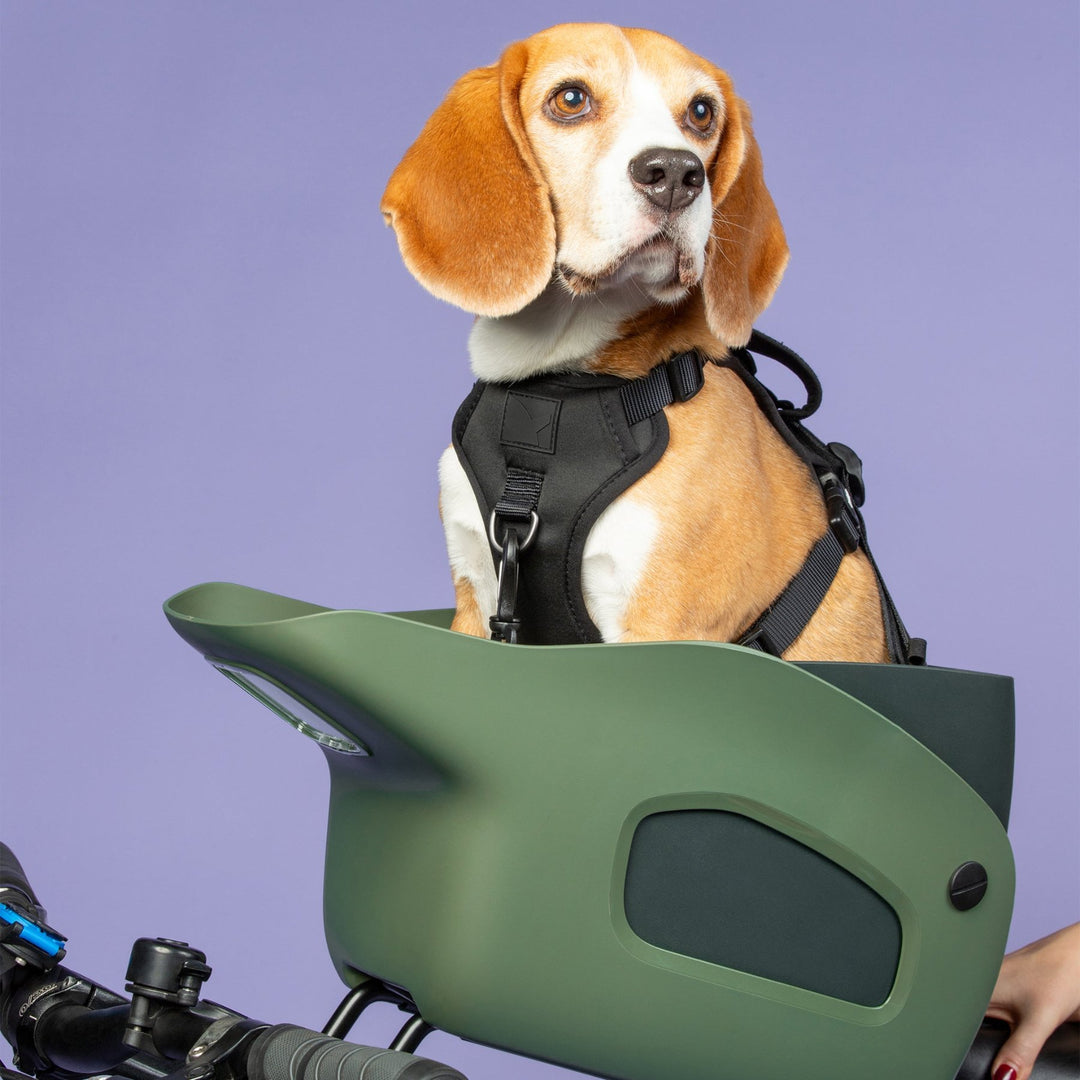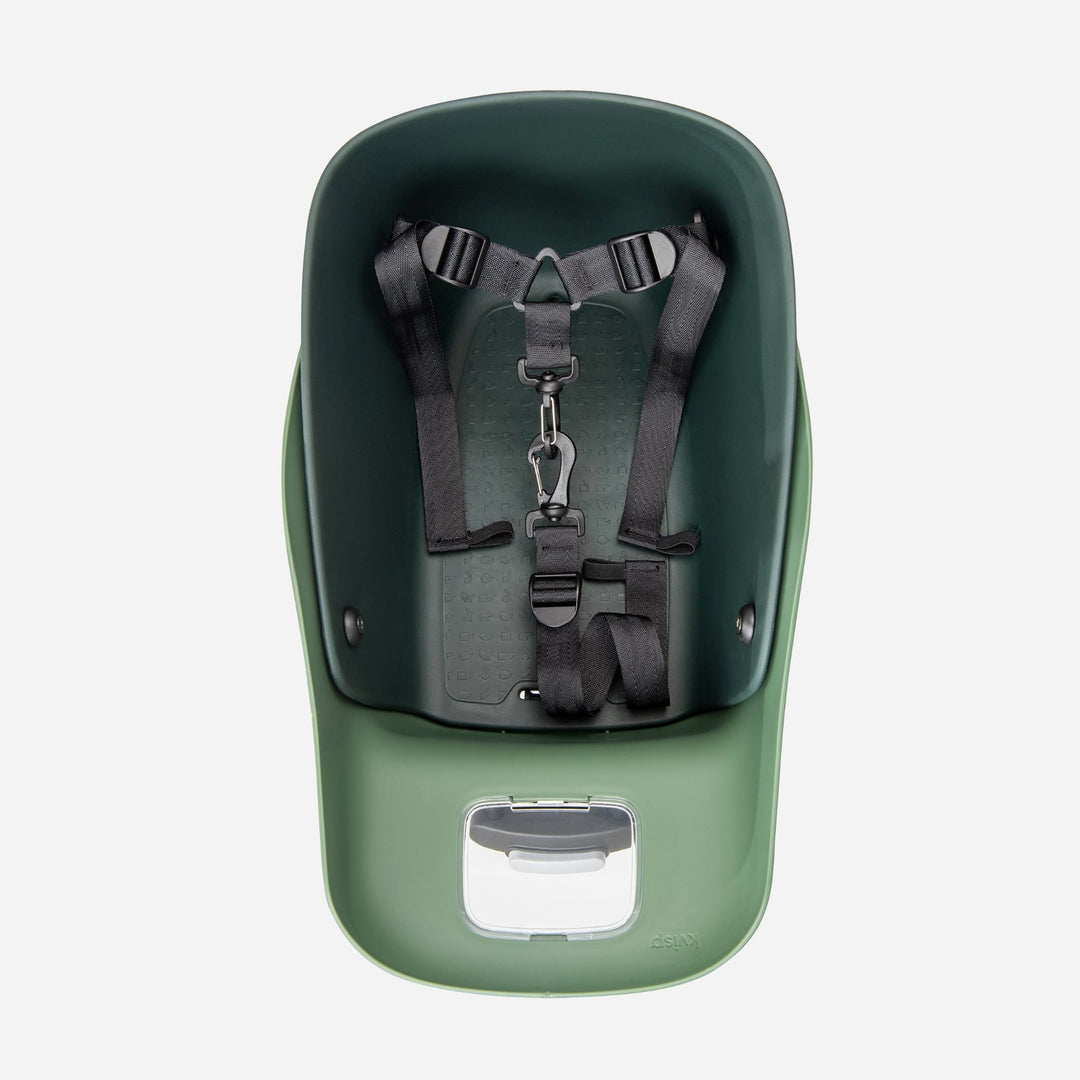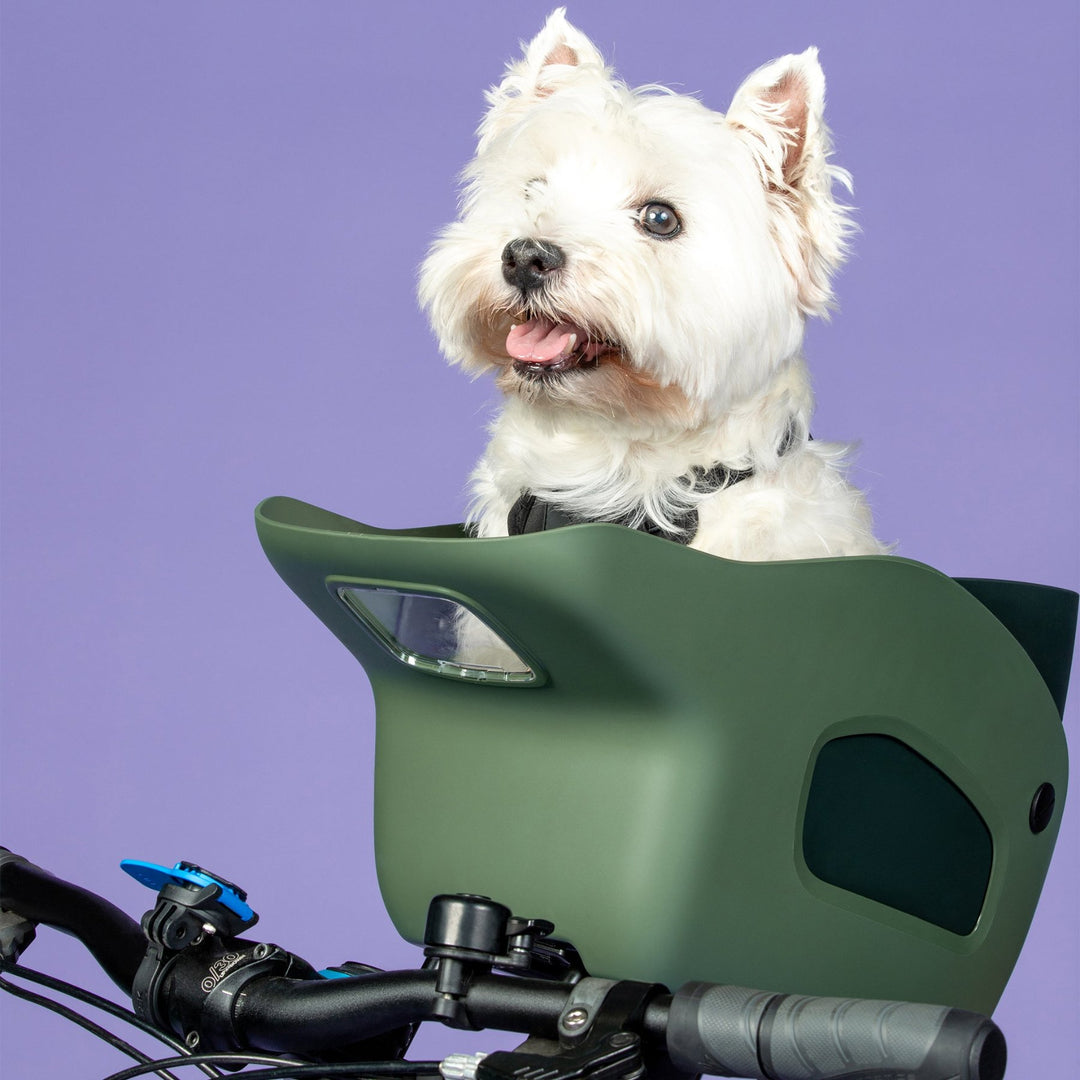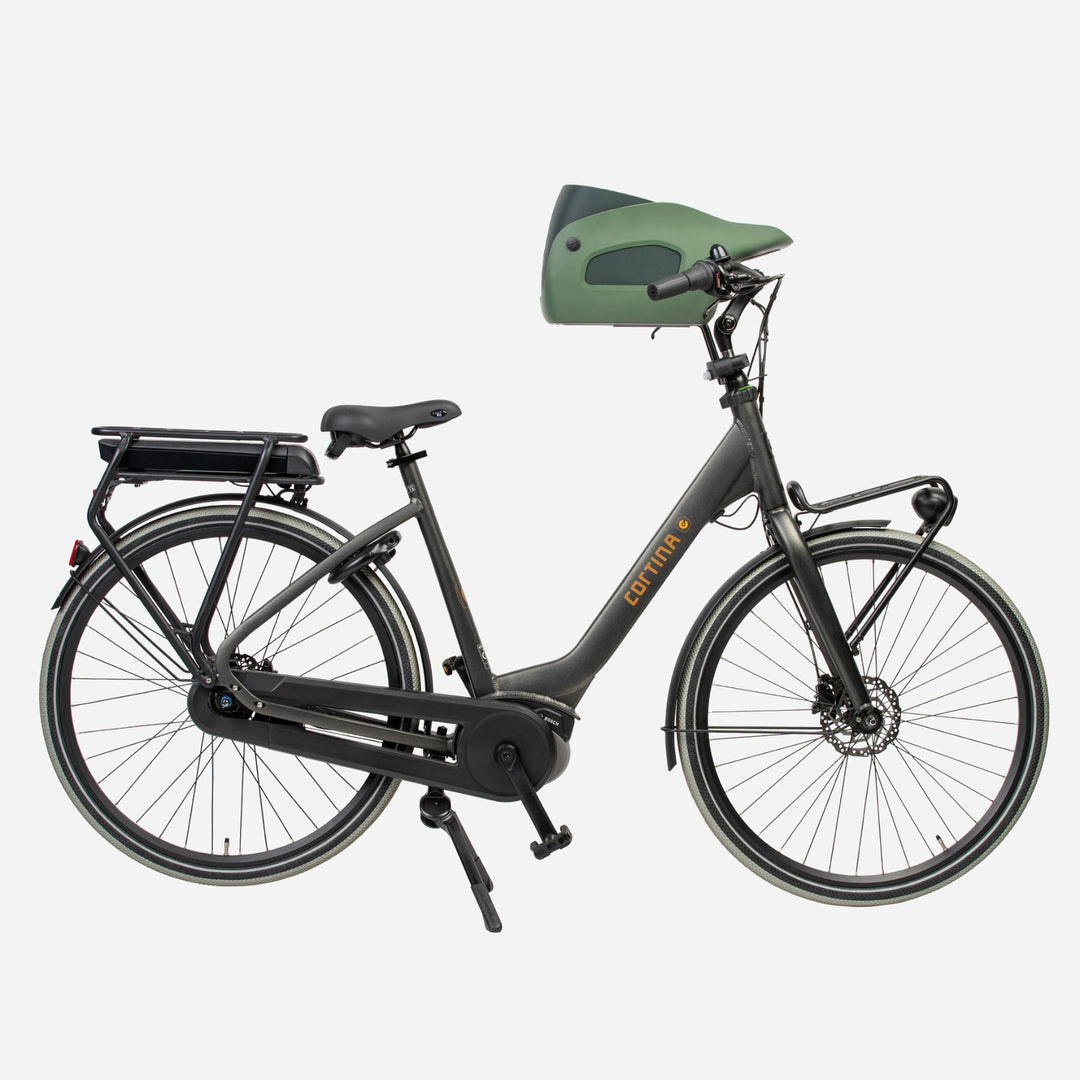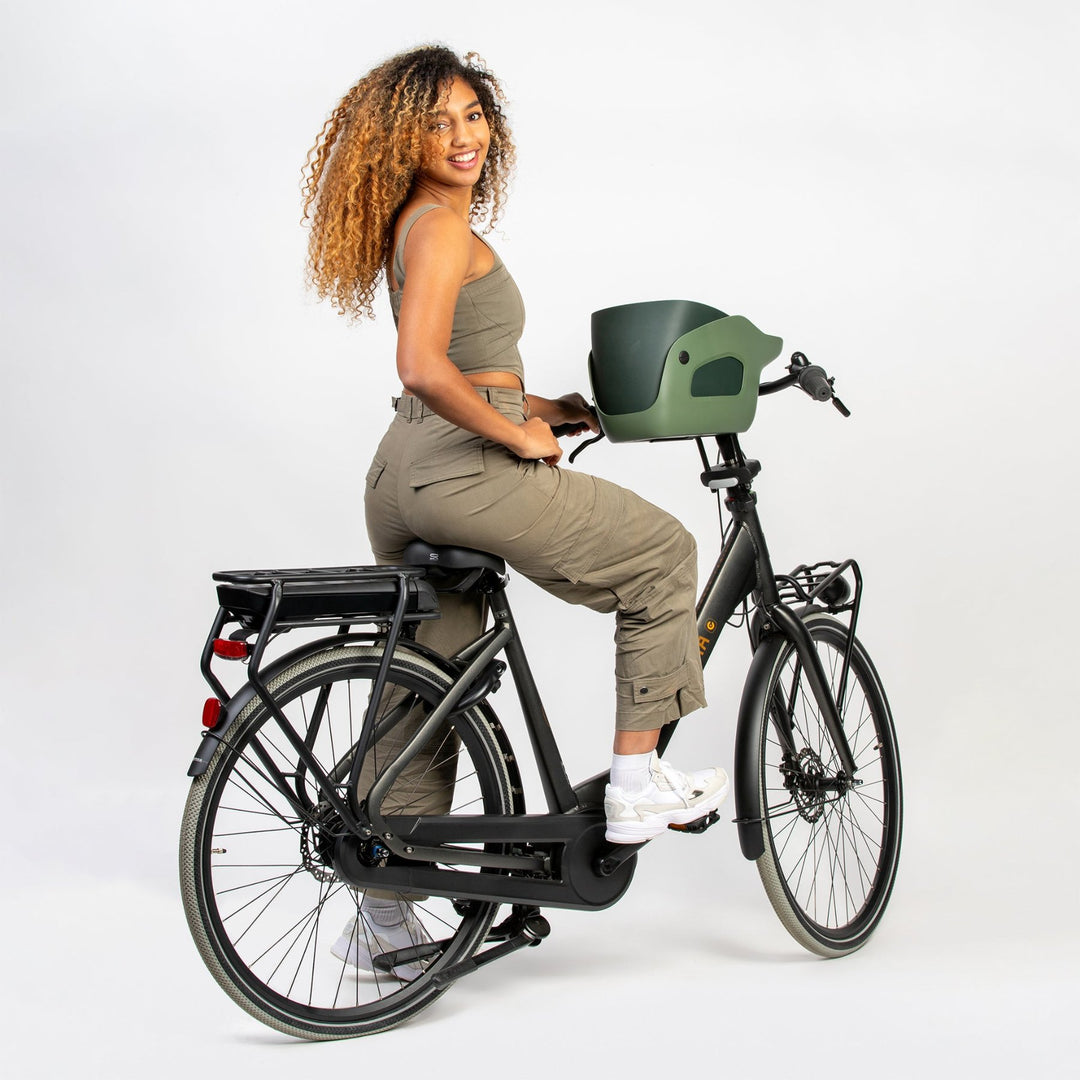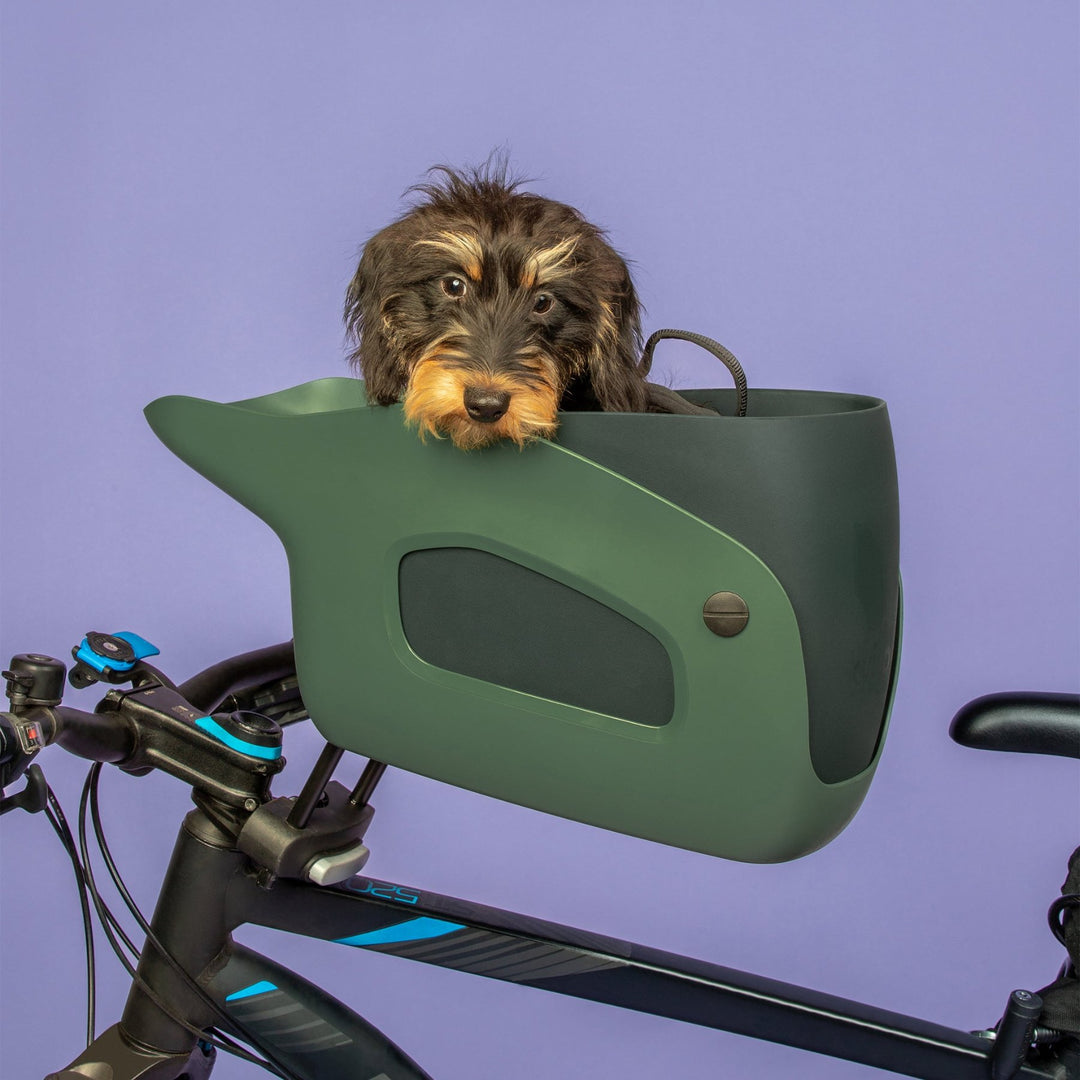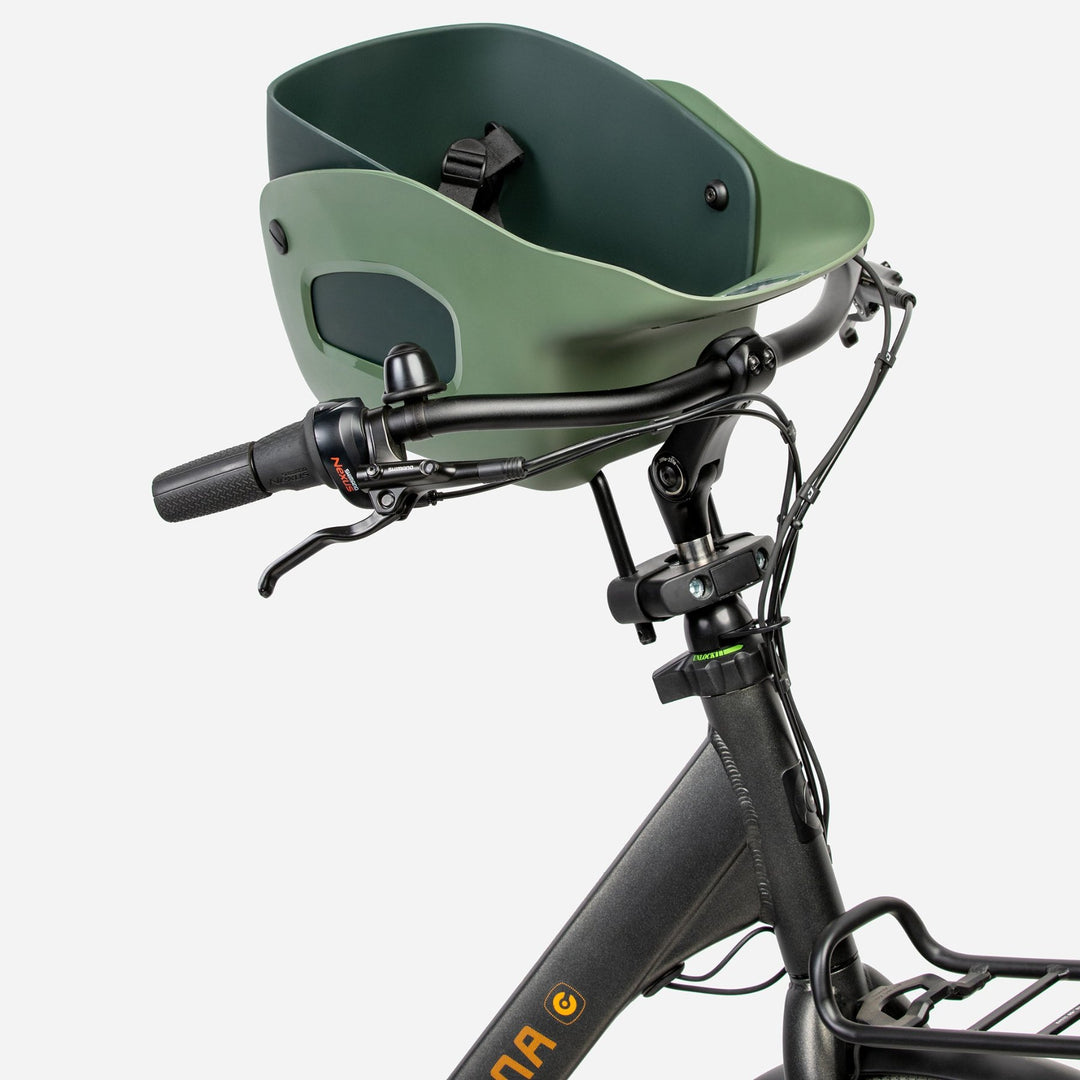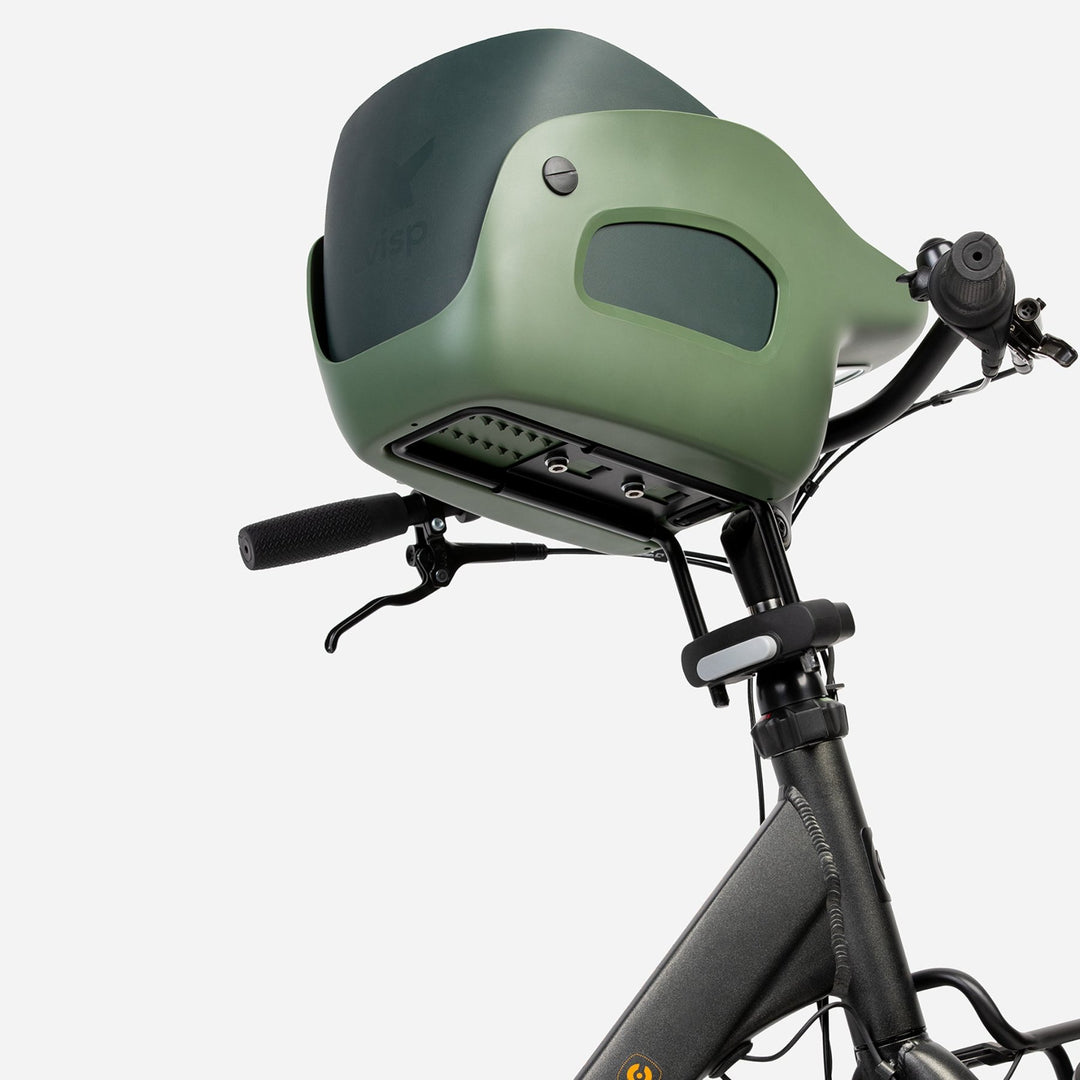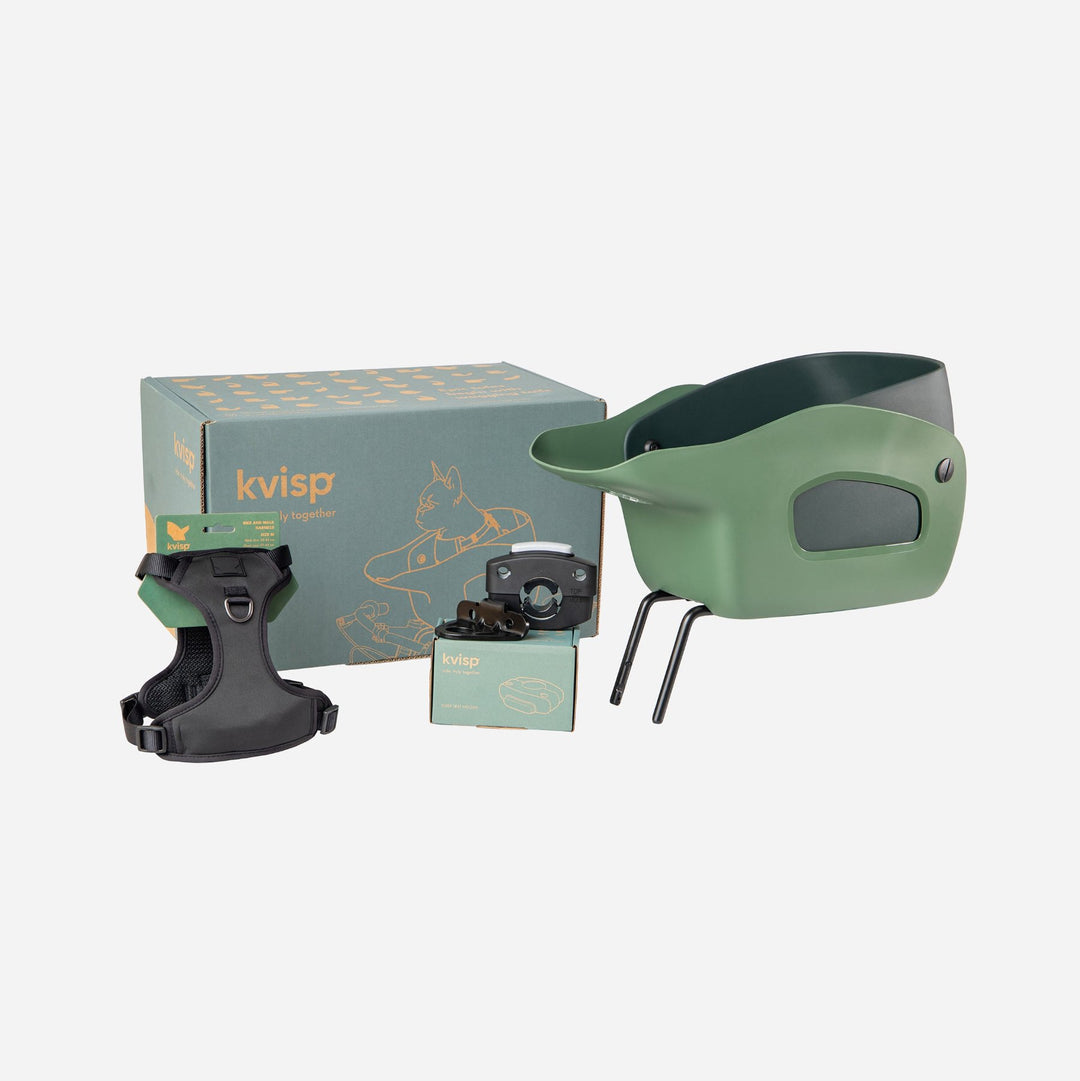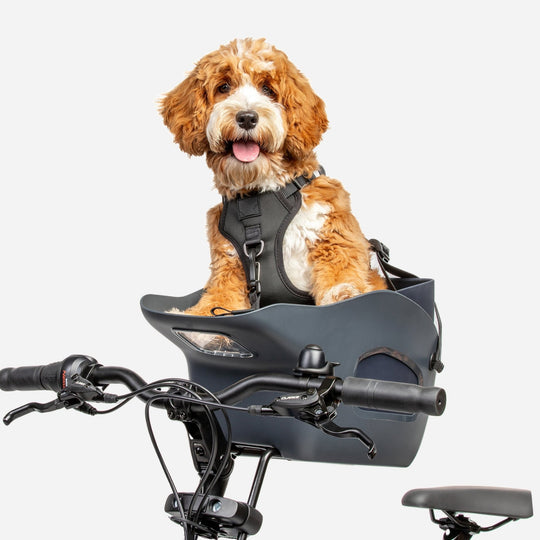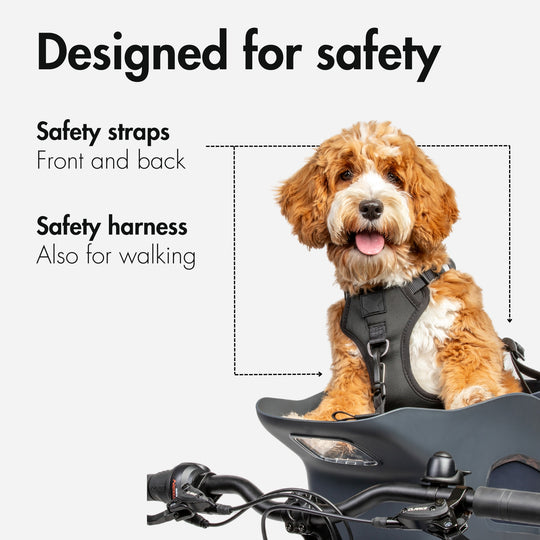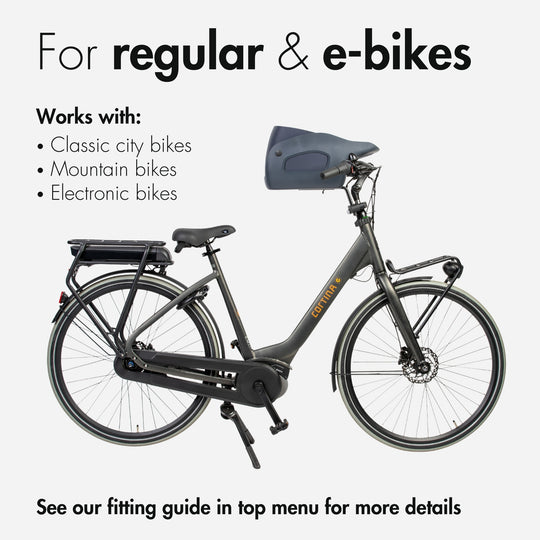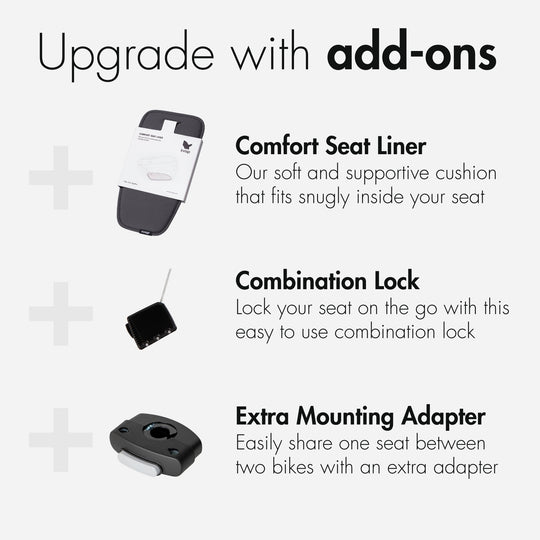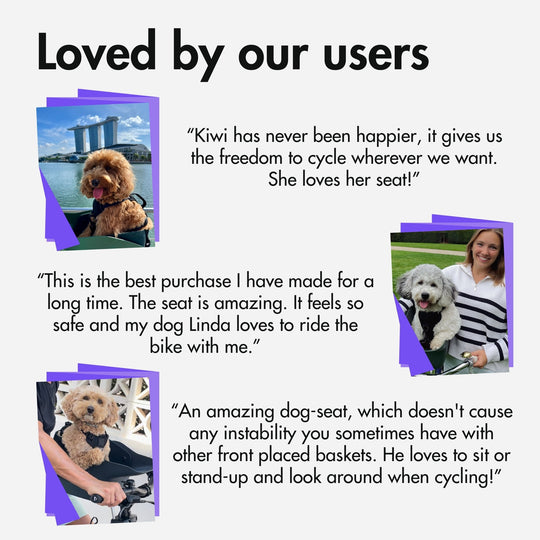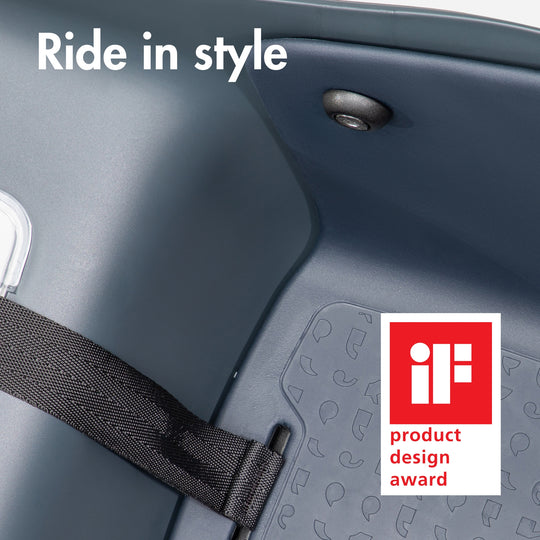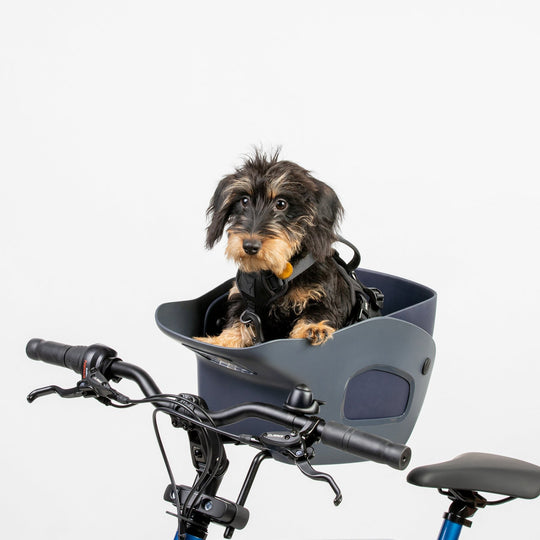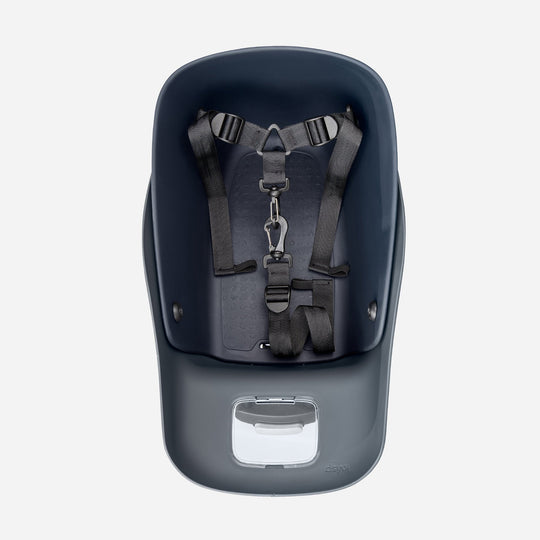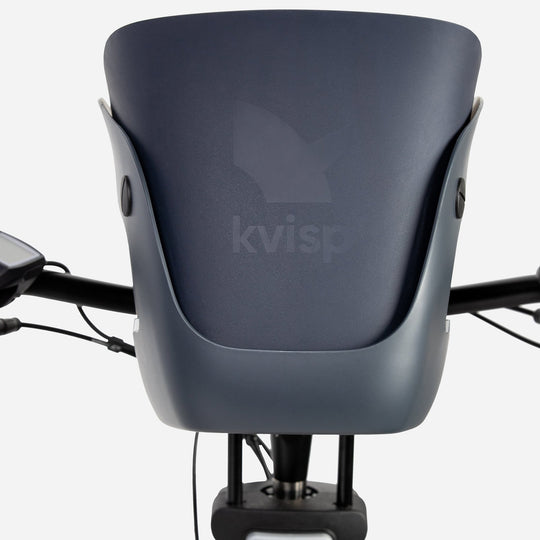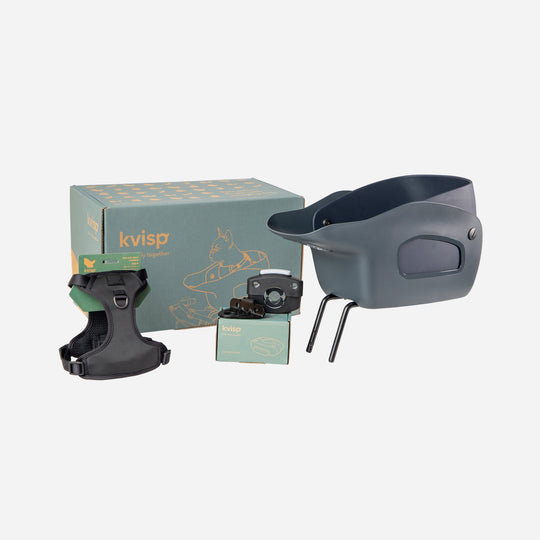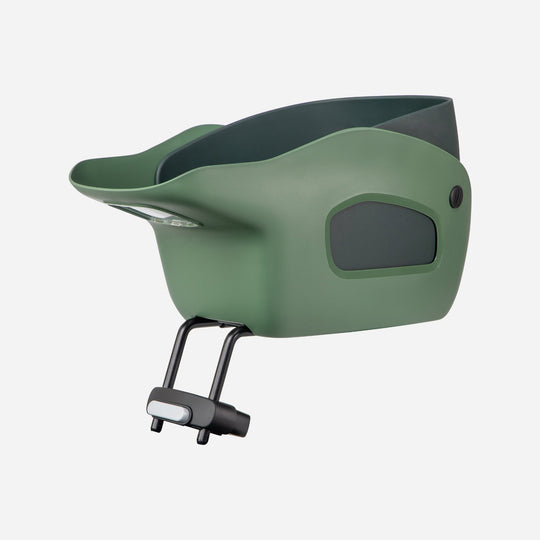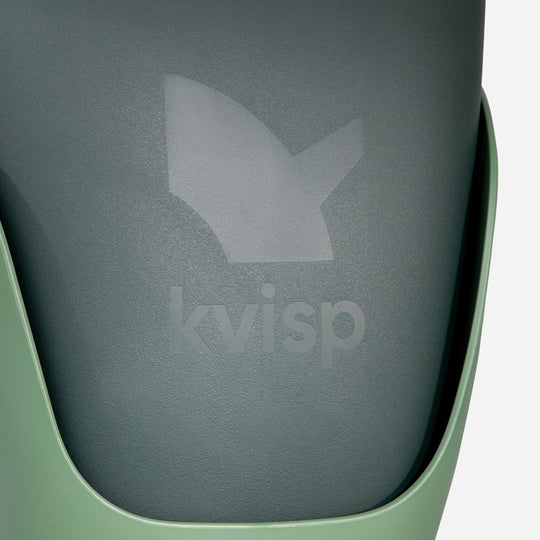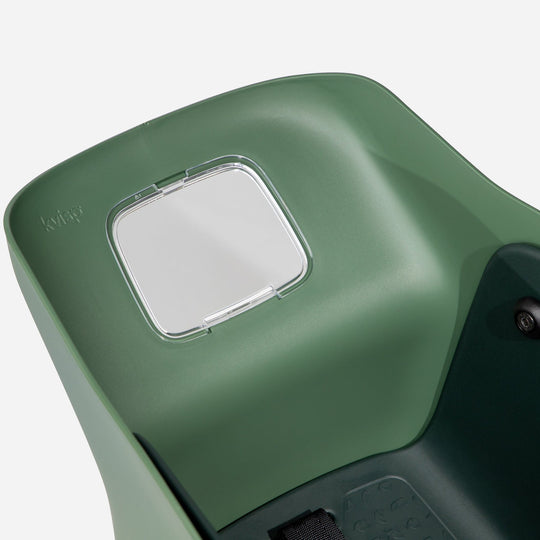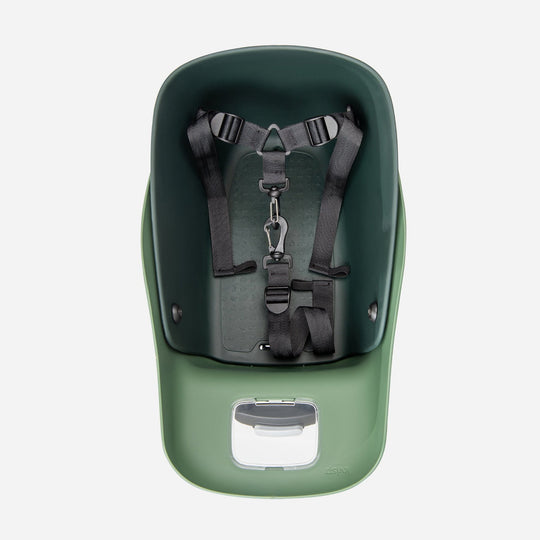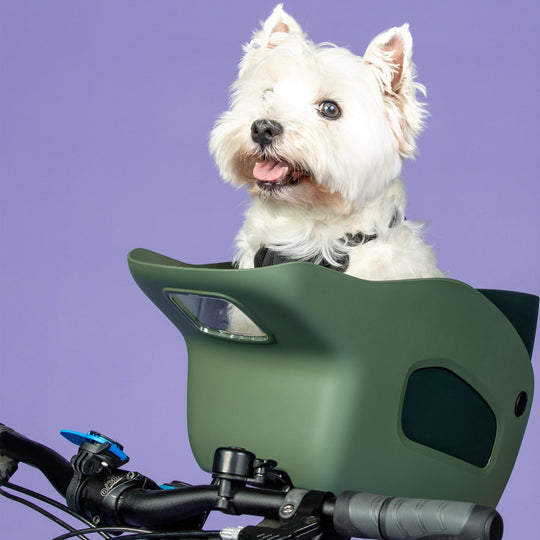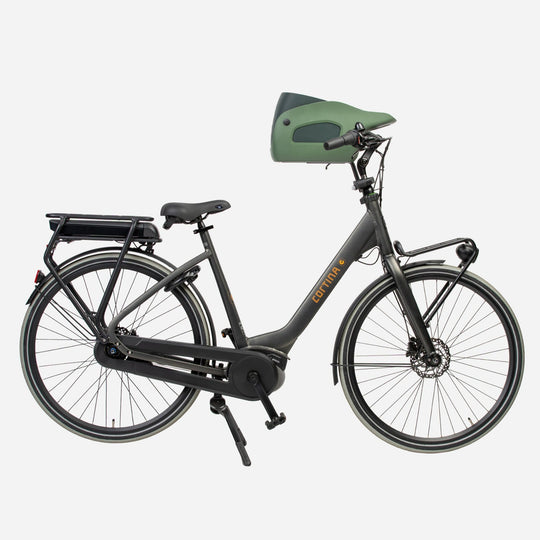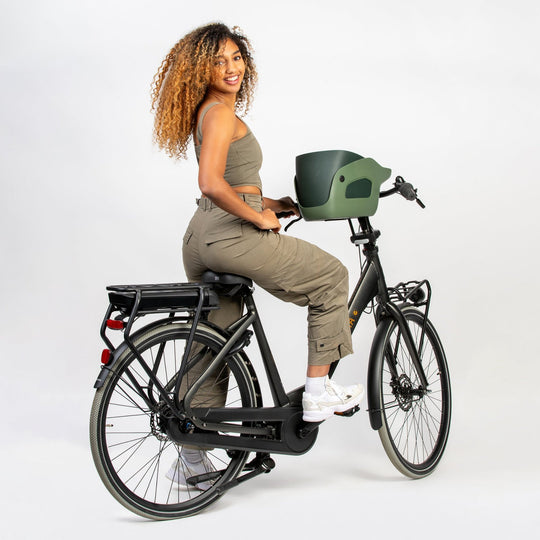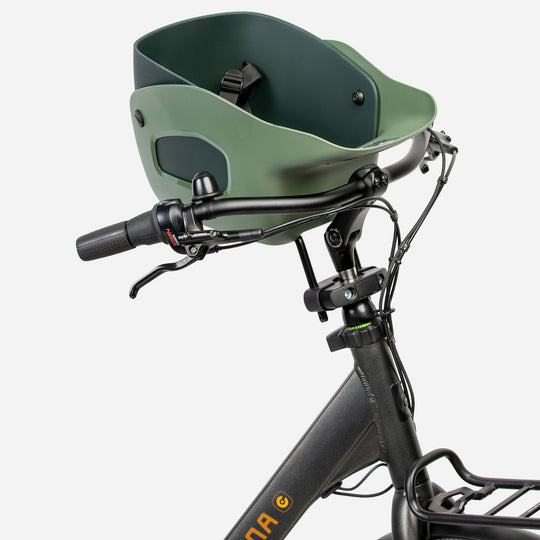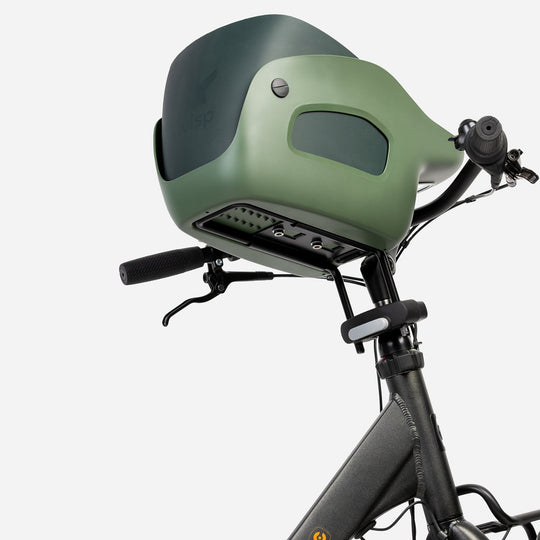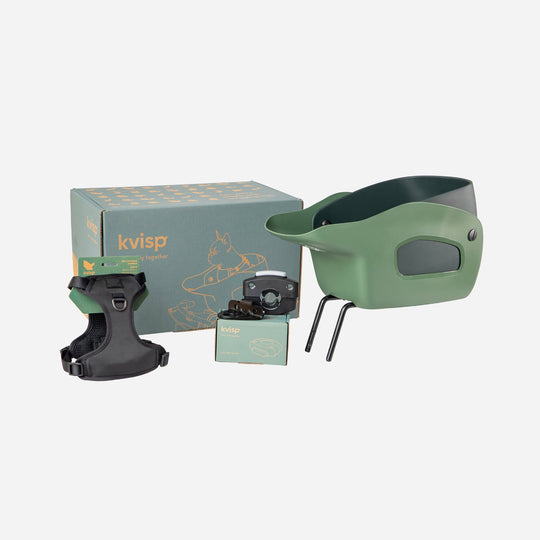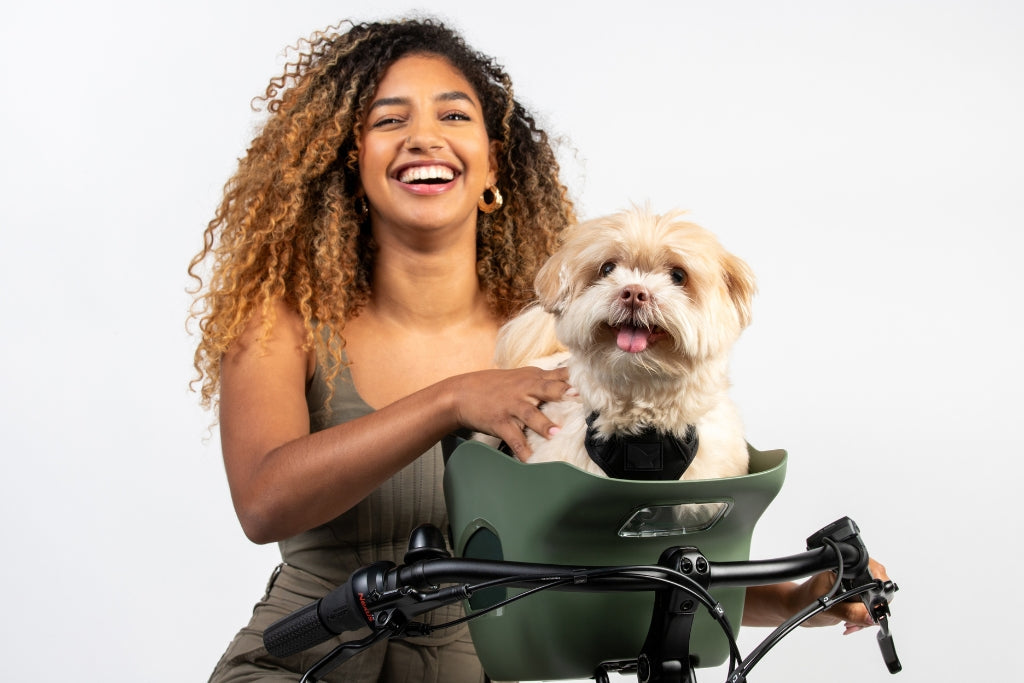The Role of Balance and Weight Distribution When Biking with a Dog
If you’ve ever tried riding your bike with a backpack that’s too heavy on one side, you already know how tricky weight distribution can be. Now, imagine that weight isn’t just stationary—it’s a living, breathing pup that might wiggle, shift, or lean at the most unexpected moments! The way weight is distributed on your bike plays a huge role in stability control and handling balance when riding. A poorly balanced setup can make steering feel unresponsive or even cause dangerous wobbles, especially when navigating turns or stopping suddenly.

Proper weight distribution isn’t just about your comfort—it’s about safety. If too much weight is placed toward the front or back of the bike, it throws off the riding physics, making it harder to maintain a smooth cycling experience. A front-mounted dog basket helps keep the center of gravity closer to your body, allowing better control compared to rear-mounted carriers, which can make steering feel sluggish. But even with a front-mounted dog bike basket, knowing how to adjust your handling to compensate for extra weight is key to an enjoyable, safe ride!
Understanding Your Bike’s Center of Gravity
A bike’s center of gravity is the invisible point where its weight is evenly distributed. When you’re riding solo, your body naturally centers itself over the bike frame. But once you add a dog, your bike’s balance shifts, and if you're not careful, that shift can throw off your ability to steer smoothly or react quickly to obstacles.
👉 How a dog's position affects your center of gravity:
✔️ A front-mounted basket keeps the weight within your field of vision, making it easier to anticipate shifts.
✔️ A rear-mounted carrier adds weight behind the seat, affecting how the bike handles turns and stops.
✔️ A well-balanced setup ensures the bike doesn’t tip too far forward or backward when braking.
✔️ The lower your dog sits in the basket, the more stable your ride will be.
Understanding this concept helps you make informed choices about where to place your dog for the safest and most comfortable experience. If you’re just starting out, practice balancing your bike with weight similar to your dog’s before heading out on a full ride together.
How a Dog’s Size and Weight Influence Balance
Let’s be real—riding with a 10-pound terrier is a totally different experience than carrying a 25-pound Frenchie in your bike basket. The larger the dog, the more noticeable the bike weight shift becomes, especially when turning or stopping. This means that dog size plays a major role in handling balance when riding. A heavier dog requires extra effort to keep the bike stable, while a smaller dog may feel less disruptive but still needs to be secured properly to prevent unexpected movement.
❌ Common mistakes related to weight distribution:
➡️ Choosing a carrier that can’t handle your dog’s full weight
➡️ Not considering how a dog’s shifting movements affect stability
➡️ Placing the dog too high, making the bike top-heavy
➡️ Riding without first testing how the added weight affects handling
For a smooth cycling experience, always check your bike’s weight limits before adding a dog carrier. Keep in mind that even a well-trained pup will naturally shift in response to movement or external stimuli, so choosing the right basket for their size and temperament is just as important as selecting a secure mounting system.
Choosing the Right Position for Your Dog on the Bike
Where you position your dog on your bike can make or break the riding experience. Some riders prefer a rear-mounted carrier, thinking it keeps weight off the handlebars, but this setup has its drawbacks. You can’t see your dog while riding, and extra weight behind the seat can impact your ability to maneuver quickly. On the other hand, a front dog bike basket provides better visibility, improved stability, and a closer bond with your pup during the ride.
✅ Why front-mounted carriers are the preferred choice for balance:
✔️ Keeps your dog within your line of sight, allowing you to monitor their comfort and safety.
✔️ Helps distribute weight evenly, preventing awkward bike weight shifts.
✔️ Enhances stability control, especially when stopping or navigating tight turns.
✔️ Creates a more intuitive riding experience, keeping the center of gravity closer to you.
If you’re looking for a carrier that prioritizes both safety and stability, you’ll want one that securely attaches to your handlebars without making the bike feel front-heavy. This is why well-designed baskets, like the Kvisp Dog Bike Carrier, are engineered with weight distribution in mind. It’s built to keep your pup steady without throwing off your balance, so you can focus on enjoying the ride! Wondering if your bike is compatible with the Kvisp dog bike carrier? Check out the “Will My Bike Fit the Kvisp?” guide for detailed specs.

How Your Dog’s Movement Affects Stability
Even the most well-behaved dog isn’t a static passenger. A quick head turn, a tail wag, or an excited bark can shift their weight unexpectedly, making handling balance when riding more challenging. This is why training your pup to stay calm and steady inside the basket is non-negotiable.
👉 Ways to minimize movement-related balance issues:
➡️ Use a harness and secure them to the basket to prevent sudden leaps.
➡️ Start with short, slow rides to help them adjust to the motion.
➡️ Reward calm behavior with treats and positive reinforcement.
➡️ Consider a bike-and-walk safety harness, which offers extra support while transitioning on and off the bike.
If your dog is fidgety, don’t worry! Most pups get used to biking quickly with a little patience and consistency. The key is to start small—ride around a quiet area first and gradually increase ride time. With the right setup and a bit of training, your pup will become a pro at staying steady in no time.
The Impact of Road Conditions on Balance
Smooth pavement and wide bike paths are a dream when riding with your pup, but not every route is created equal. Rough roads, potholes, and gravel paths can throw off your stability control, making it harder to maintain balance. Understanding how different surfaces impact your ride will help you prepare for unexpected bumps along the way.
✔️ Best riding conditions for a stable bike ride:
➡️ Even, paved roads with minimal cracks or debris
➡️ Bike-friendly trails with gradual inclines rather than steep hills
➡️ Dedicated bike lanes away from heavy traffic
➡️ Areas with minimal distractions to keep your pup relaxed
❌ Surfaces that can challenge your balance:
➡️ Loose gravel or sand, which makes turning unpredictable
➡️ Steep inclines that increase forward weight shift
➡️ Wet or slick roads that affect braking and traction
➡️ High-traffic areas where sudden stops are needed
Before heading out, scout your route and pick paths that minimize hazards. If you plan to ride in different terrains, a well-balanced carrier and proper tire pressure (more on that later!) will help keep your ride smooth and controlled.
The Role of Tire Pressure and Bike Suspension
Tire pressure might not be the first thing on your mind when prepping for a ride with your dog, but trust me—it makes a huge difference in how stable your bike feels. The right PSI (pounds per square inch) ensures that your tires absorb shocks properly, keeping your ride smooth and controlled. If your tires are too soft, they’ll create unnecessary drag, making pedaling harder and affecting stability. On the flip side, overinflated tires won’t absorb bumps well, which can make the ride feel jittery—especially with a front dog bike basket adding extra weight to the front wheel.
👉 How to optimize tire pressure for stability:
➡️ Check your bike’s recommended PSI (usually printed on the tire sidewall).
➡️ Inflate tires toward the higher end of the range for smooth pavement and lighter loads.
➡️ If riding on gravel or rough trails, use slightly lower pressure for better grip and shock absorption.
➡️ Keep both tires evenly inflated to avoid unnecessary bike weight shifts.
Bike suspension also plays a role in handling balance when riding. If you have a rigid fork, your bike transfers all road vibrations straight to the frame—and to your dog. A front suspension fork, however, absorbs more of the impact, creating a more comfortable experience for both you and your pup. If your bike doesn’t have suspension, slightly lowering your tire pressure can help compensate for rougher terrain.
How to Properly Mount and Dismount with a Dog on Board
Getting on and off your bike might feel second nature—until you add a dog into the mix. A sudden weight shift while mounting can send your bike tipping, and if your pup isn’t securely in place, they might try to jump out before you’re even ready to go! To prevent mishaps, develop a routine that keeps both of you safe and stable when getting on and off the bike.
👉 Best practices for safe mounting and dismounting:
✅ Start with the bike stabilized—either by using a sturdy kickstand or holding the handlebars firmly.
✅ Load your dog into the carrier before you mount (if using a front basket) and secure them with a harness.
✅ Swing your leg over carefully, keeping weight evenly distributed to prevent sudden tipping.
✅ Dismount slowly and always support the bike before helping your dog out.
One of the best ways to make mounting and dismounting easier is by using a stable and well-designed carrier. A front dog bike basket with secure mounting points ensures that weight is evenly distributed, making balance easier from the get-go. If your pup is an eager jumper, a bike-and-walk safety harness can help keep them secure while transitioning on and off the bike.

Choosing the Right Dog Bike Carrier for Optimal Balance
Not all dog carriers are built for stability control—some sit too high, some aren’t securely attached, and others simply don’t account for how a dog’s movement affects handling balance when riding. A well-designed front dog bike basket should feel like an extension of your bike, not a wobbly attachment that shifts unpredictably.
👉 What to look for in a stable dog bike carrier:
➡️ A low center of gravity to prevent tipping.
➡️ Secure handlebar mounting to keep the basket firmly in place.
➡️ A spacious yet snug interior to prevent excessive movement.
➡️ Weight distribution that doesn’t compromise steering control.
The wrong carrier can throw off your balance, making even short rides feel unstable. If you’ve ever felt like your bike was top-heavy or struggled with unpredictable shifts in weight, it might be time to reconsider your setup.
Why the Right Dog Bike Carrier Makes a Difference
A good carrier doesn’t just hold your dog—it improves your ride by keeping weight evenly distributed and making stability control second nature. The Kvisp Dog Bike Carrier is designed specifically with balance and safety in mind, ensuring that your pup rides comfortably without affecting your bike’s natural handling.
👉 Why riders love the Kvisp:
➡️ Designed for stability, keeping your dog secure without making the bike front-heavy.
➡️ Shock-absorbing mount that minimizes road vibrations for a smoother ride.
➡️ Ergonomic weight distribution, making it easier to maneuver turns and stops.
➡️ Compatible with a variety of bikes—but if you’re curious, check the Will My Bike Fit the Kvisp? guide to be sure.
If you’ve ever struggled with a wobbly or unbalanced ride, a front dog bike basket like the Kvisp can completely change your biking experience. It allows you to focus on the road ahead while keeping your pup safely within view.
Practicing and Perfecting Your Ride Before Hitting the Road
Even the best setup requires some practice before heading out on a long ride. Your dog needs time to adjust to the movement, and you need time to get used to the added weight. The key to a smooth cycling experience is taking it slow and allowing both you and your pup to get comfortable with the new setup.
👉 Steps to practice before going on a full ride:
✔️ Start by placing your dog in the carrier while the bike is stationary.
✔️ Walk the bike forward without riding to help them get used to the motion.
✔️ Take short rides in a quiet, low-traffic area.
✔️ Gradually increase distance and speed as your dog becomes more relaxed.
Some dogs take to biking immediately, while others might need a bit more encouragement. Be patient and make the experience positive and rewarding—before you know it, your pup will be excited to hop in the basket and go for an adventure!
Mastering Balance for a Safe and Enjoyable Ride
Riding with your dog isn’t just about convenience—it’s about creating an enjoyable and stress-free experience for both of you. By understanding how bike weight shifts, tire pressure, and stability control affect handling, you can maximize safety while having a blast on the road. A properly balanced ride means less strain on your bike, better maneuverability, and a more enjoyable experience for your pup.
👉 Final takeaways for a safe and stable ride:
➡️ Keep weight evenly distributed to maintain balance and control.
➡️ Use a front dog bike basket designed for stability and security.
➡️ Train your dog to stay calm and still while riding.
➡️ Check your setup before every ride—tire pressure, mounting points, and harness security matter!
With the right bike setup, a properly fitted carrier, and a little bit of practice, biking with your pup can be one of the most rewarding experiences ever. So, get out there, enjoy the ride, and give your furry co-pilot the adventure they deserve!






